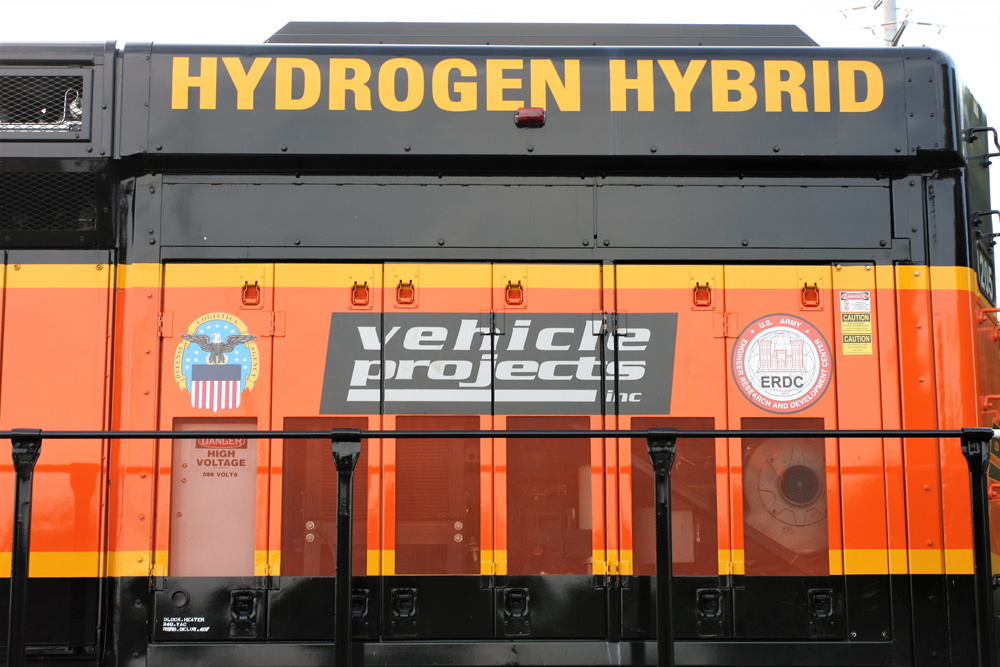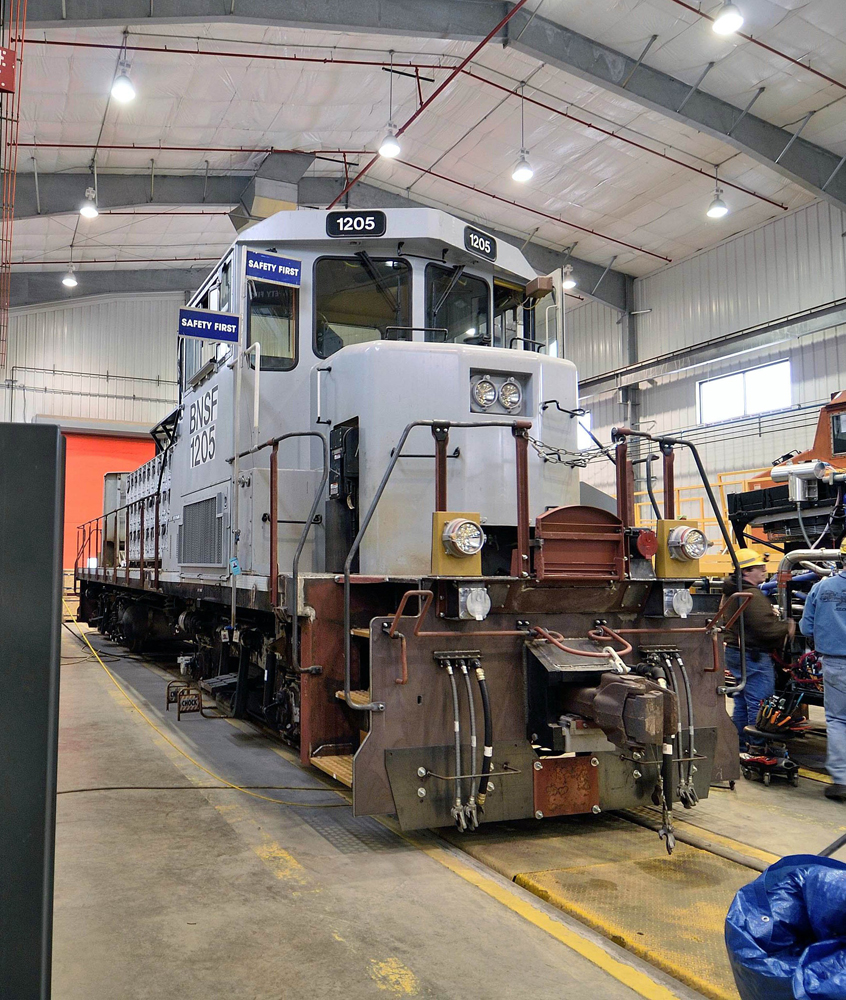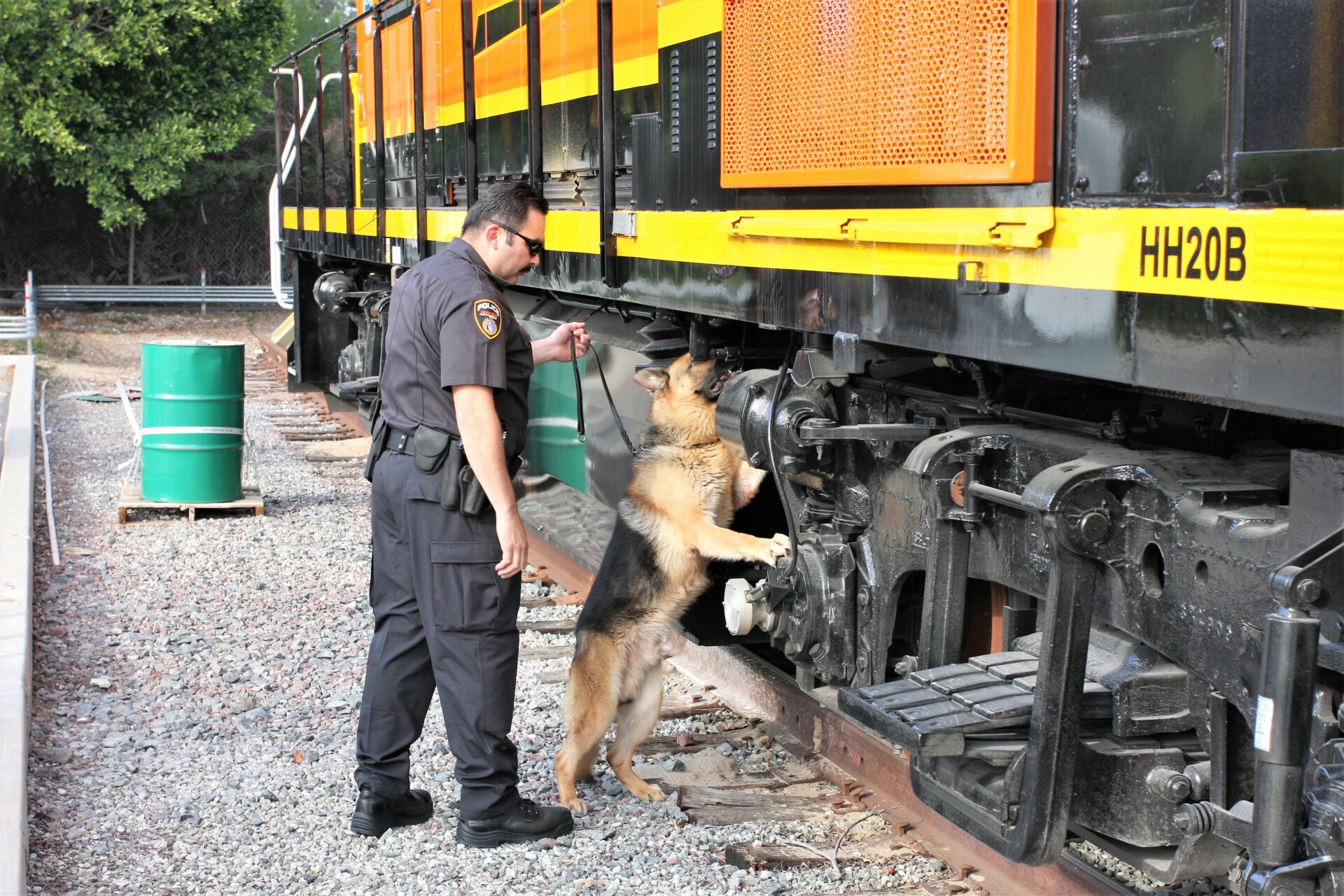|

July
16, 2023
By
David Lustig
BNSF’s first hydrogen locomotive - Trains
Hydrogen locomotive

BNSF’s HH20B hydrogen locomotive test unit, No. 1205, awaits duty in
Los Angeles on April 18, 2010. David Lustig
Hydrogen powered locomotives have been getting
plenty of press lately, with several railroads, large and small,
taking the concept seriously.
Long before the current plethora of projects however, BNSF, in
conjunction with Vehicle Projects, a Colorado-based fuel-cell company
with transportation interests, commissioned a prototype hydrogen
locomotive in the early 2000s.
The core of the new unit came from a previously undelivered RailPower
Green Goat, a battery-powered switcher that initially created a big
splash in the locomotive business. Similar to many designs that have
tried to get a toehold in the North American market, the Green Goat,
no matter how well thought out its design, never really enamored
itself to operating crews.

Lettering on the locomotive’s long hood makes it
clear the HH20B is not a typical diesel. Davd Lustig
Canadian Pacific ordered a number of the units,
but the majority of the order was canceled before most of the
locomotives left the factory. One of those remaining was CP 1704,
which had been assembled, painted, and was waiting to be delivered.
The BNSF/Vehicle Projects hydrogen project gave the unit a chance at a
second life. Stripped of its multiple batteries, the unit was sent to
BNSF’s Topeka, Kan., shops.

The former Green Goat locomotive undergoes its conversion to hydrogen
power at BNSF’s shops in Topeka, Kan., on Dec. 9, 2008. David Lustig
Upon arrival, the unit’s innards were stripped
out and the railroad’s engineers were tasked to redesign the space for
hydrogen fuel cell apparatus and specially designed hydrogen storage
tanks. After more than two years of on-again, off-again work, the
unit, now BNSF HH20B No. 1205, rolled into the sunlight on June 29,
2009. It was then sent to an off-line locomotive rebuilder for
painting.
In between, the unit demonstrated its abilities in the Topeka area
before being sent dead in train to Southern California, which had
always been intended as its home base. Here it participated in a
number of dog-and-pony shows for local politicians, its clean hydrogen
power touted over the emission-spewing diesels idling in the nearby
fueling racks.
It was usually positioned on a display track near the administration
building’s parking lot for visitors to marvel at and employees to
ignore. Seven years, and probably zero revenue miles later, the
experiment was considered officially completed. Ultimately the 1205
was shipped back to Topeka to await disposition.
There is a happy ending.
Stripped of its hydrogen components, No. 1205 was eventually donated
by BNSF to the Oklahoma Railway Museum in Oklahoma City. The goal,
according to a source, is to physically refurbish it and use it as a
non-powered control unit on the rear end of excursion trains.

BNSF Special Agents Paul Cendejas and Lexo on the
job at Hobart Yard in Los Angeles in 2010 doing a quick check of the
newly arrived hydrogen fuel-cell locomotive. David Lustig
Green Play Ammonia™, Yielder® NFuel Energy.
Spokane, Washington. 99212
www.exactrix.com
509 995 1879 cell, Pacific.
Nathan1@greenplayammonia.com
exactrix@exactrix.com
|